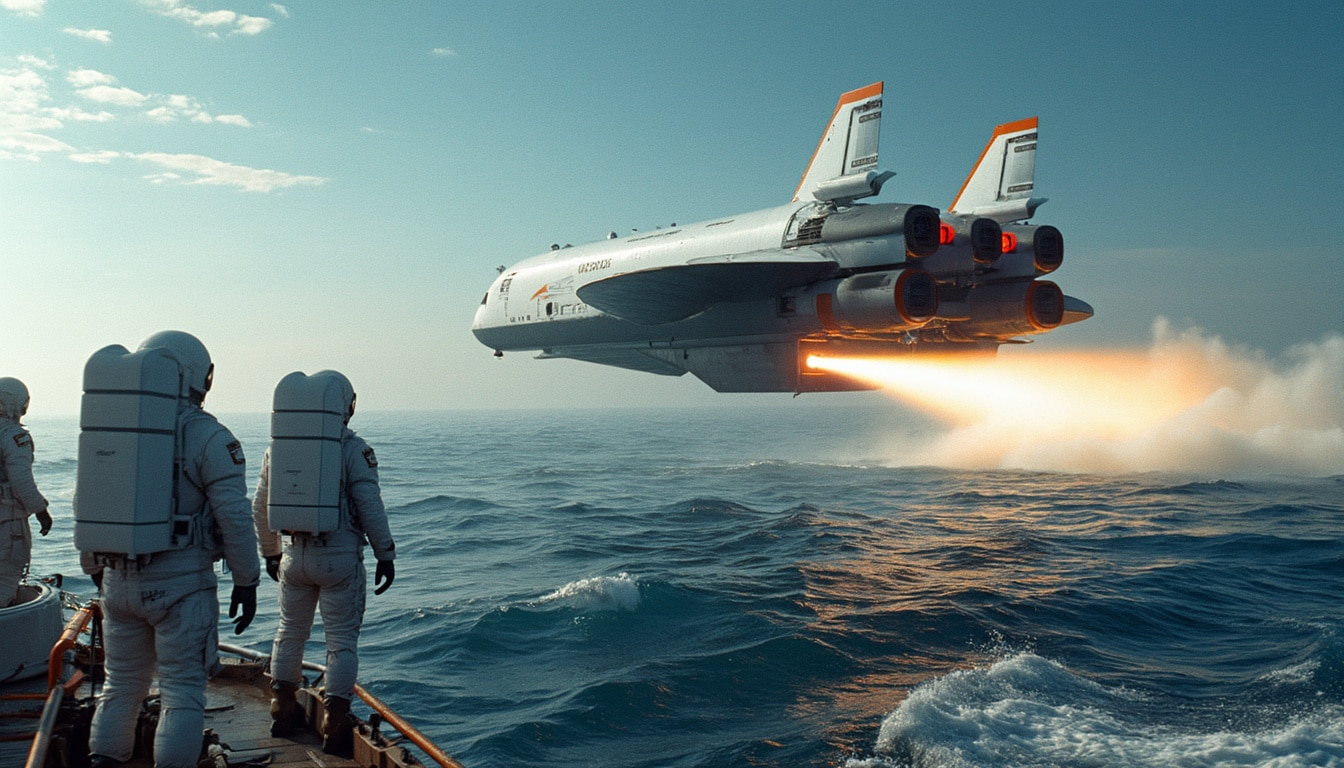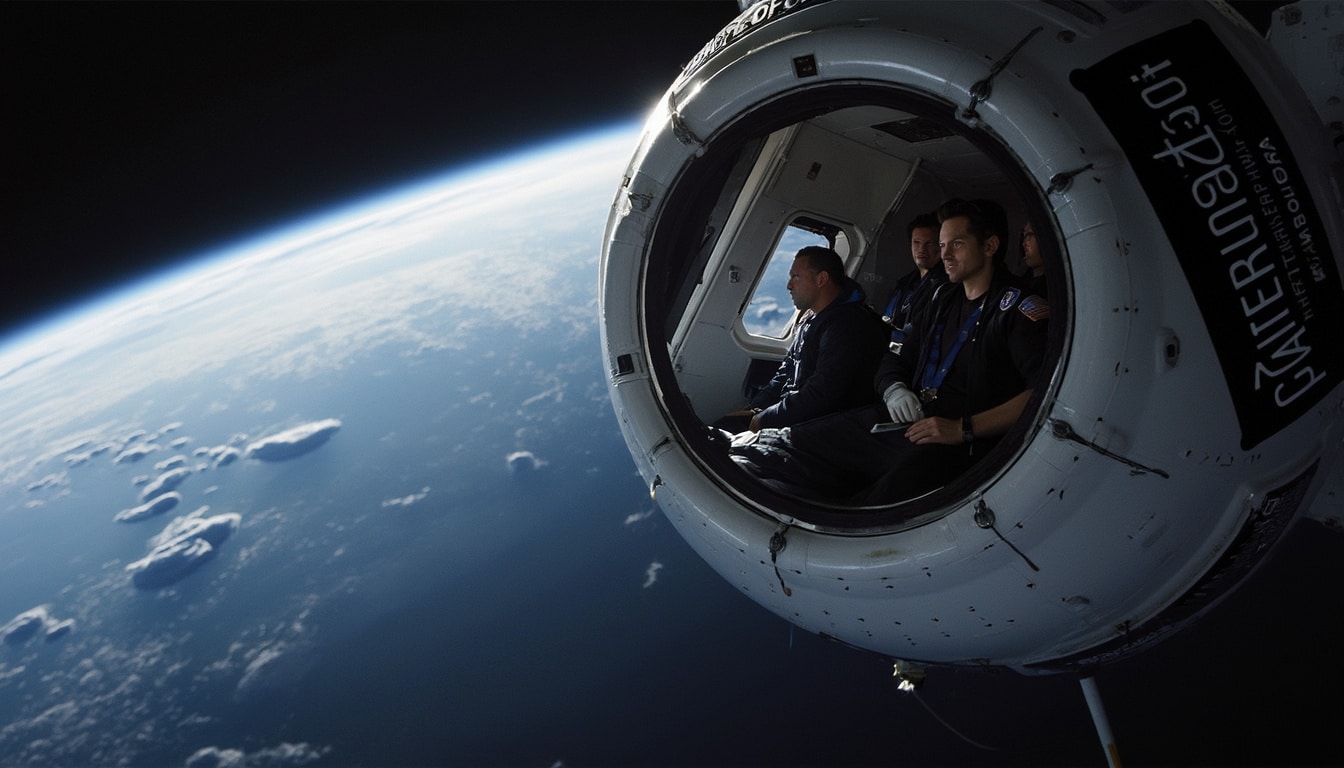The successful return of NASA’s Crew-9 astronauts marks a significant achievement in space exploration. This mission not only embodies the collaborative efforts between NASA and commercial partners like SpaceX but also showcases advancements in human spaceflight technology. The Crew-9 mission, which lasted a commendable 286 days, concluded with a meticulously executed splashdown in the Gulf of America, signaling the astronauts’ safe return to Earth after their journey aboard the SpaceX Dragon spacecraft. This article dives deep into the particulars of the Crew-9 mission, its highlights, implications for future human spaceflight, and the emerging landscape of commercial space exploration.
Unveiling the Crew-9 Mission
The Crew-9 mission stood as a testament to the advanced capabilities of private spaceflight companies, demonstrating how the collaboration between NASA and commercial giants like SpaceX, alongside other entities, such as Boeing, Blue Origin, and Lockheed Martin, expands the boundaries of what’s possible in space exploration.

The Journey Begins
Launching aboard the SpaceX Dragon spacecraft, the Crew-9 astronauts embarked on a notable journey to the International Space Station (ISS). Equipped with advanced technology and tools developed through years of research and testing, the mission involved critical scientific experiments and tests that pushed forward our understanding of living and working in space.
During their time on the ISS, Crew-9 members conducted various experiments focusing on physical and biological sciences, contributing pivotal data that will help enhance future missions and improve life both aboard space stations and on planetary surfaces.
Signature Highlights of Crew-9
One of the standout moments of the Crew-9 mission was the astronauts’ interactions with marine life during their splashdown. Upon their return, reports surfaced indicating that a pod of dolphins surrounded their capsule shortly after landing, creating a striking visual that has captured media and public attention alike. Events like these not only symbolize the triumphs of space travel but also serve as a reminder of Earth’s natural wonders.
The splashdown saw the timely execution of the Dragon’s parachutes, which facilitated a safe return through Earth’s atmosphere. The team faced several challenges during their extended mission, building resilience among the astronauts and demonstrating the effectiveness of current space missions in advancing human adaptability in space environments.
The Technical Aspects of the Splashdown
The transition from orbit to landing is one of the most critical phases of any space mission. The mission control teams at SpaceX and NASA coordinated seamlessly to monitor the descent and splashdown procedures of the Crew-9 spacecraft.
Key Components in the Mission
The spacecraft is designed to perform a series of maneuvers, from re-entry into Earth’s atmosphere to the deployment of parachutes. Each stage is meticulously programmed, ensuring that the astronauts can return safely to their home planet. The Dragon’s advanced heat shield technology protects the crew from the intense heat generated during re-entry.
Real-time data transmission from the spacecraft played a vital role in overseeing the mission’s success. Ground control teams utilized this information to evaluate the capsule’s integrity, ensuring that the spacecraft was ready for splashdown.
Future Implications for Human Spaceflight
The return of Crew-9 also provides rich insights for future missions. Data acquired from their experiences aboard the ISS will support the design of upcoming space missions by Northrop Grumman, Virgin Galactic, and Sierra Nevada Corporation, as they continue to evolve the landscape of commercial spaceflight.
Furthermore, the collaboration between governmental and private sectors exemplifies an evolving dynamic that will likely lead to a more vibrant and diverse community of players in space exploration. Innovations from this mission can turn into essential guidelines for similar projects in the future, aiming towards Moon missions, Mars expeditions, and beyond.
Tracking Crew-9’s Journey Home
The journey home for Crew-9 was detailed with continuous updates from NASA and SpaceX via various communication channels. The tactical approach to broadcasting the splashdown included engaging audiences through social media and news outlets, providing them with real-time information about the mission’s progress.
Public Engagement and Awareness
The splashdown event garnered significant media attention, with coverage across platforms such as BBC News and NBC News. The excitement around the mission showcased the public’s interest in space endeavors, igniting discussions surrounding humanity’s future in space.
Public engagement initiatives by both NASA and SpaceX have proved instrumental in maintaining interest in space missions. They often leverage social media to connect with enthusiasts, ultimately encouraging a new generation of space explorers.
The Wider Impact on Space Exploration
On a broader scale, missions like Crew-9 signify the onset of a new era in space exploration where commercial companies can collaborate with governmental organizations to facilitate crewed missions. Such teamwork could yield significant advancements in the field of aerospace technology, further pushing the envelope of what is achievable in human spaceflight.
Additionally, collaborations with companies like Astra and Rocket Lab are redefining launch capabilities, presenting diverse options for satellite deployment and research opportunities.
The Crew-9 Experience: A Reflection

The Crew-9 mission isn’t just about scientific achievements and technological advancements; it also evokes profound personal experiences for the astronauts involved. The transformative nature of space travel allows astronauts to encounter the world from a unique perspective, adding depth to their roles as space explorers.
The Human Element in Space Travel
Each astronaut brings their narrative to the mission, adding a rich tapestry of experiences that influences their journey. The feedback from Crew-9 members after returning highlights the emotional journey of being separated from Earth for extended periods, and the joy of reuniting with family and friends post-mission.
Moreover, their encounters with the universe further fuel the space exploration narrative, inspiring new generations to look at the stars and aspire toward a future in science and space. The ripple effect of such experiences encourages educational initiatives aimed at fostering interest in STEM careers among youth.
Legacy of the Crew-9 Mission
The legacy of Crew-9 stretches beyond the mission itself; it underlines the importance of persistent exploration and innovation. Whether through partnerships with companies like Boeing or through collaborations with emerging companies like Blue Origin and Lockheed Martin, every mission contributes to evolving the standards of human space travel.
Elaborate insights from NASA provide in-depth analyses of mission performance, further enhancing the knowledge pool available to future expeditions.
This continual enhancement of technology and methodology by both public and private entities foreshadows an exciting future, promising further innovations that will pave the way for expanded human presence in outer space.
The Future of Space Exploration
The completion of Crew-9 clearly illustrates the upward trajectory of human spaceflight plans. NASA’s collaboration with commercial companies signals a commitment to expanding our capabilities beyond low Earth orbit.
Looking Toward the Moon and Mars
As humanity embraces interplanetary exploration, the legacy of Crew-9 will undoubtedly shape upcoming missions to the Moon and Mars. The data collected from such comprehensive missions can steer future designs and practices toward achieving sustainable exploration.
| Mission | Duration | Launch Vehicle | Return Vehicle | Organizations Involved |
|---|---|---|---|---|
| Crew-9 | 286 Days | Falcon 9 | SpaceX Dragon | NASA, SpaceX |
| Artemis I | 42 Days | SLS | Orion | NASA |
| Crewing Mars 2030 | TBD | Starship | Starship | SpaceX |
Upcoming projects will continue to draw upon the successes and lessons learned from Crew-9 to create paths toward deep space exploration in the coming decades. The intricate ties between private enterprises and governmental bodies are bound to foster solutions that are both innovative and practical, propelling humanity towards a future where the stars may no longer seem too far away.




Leave a Reply